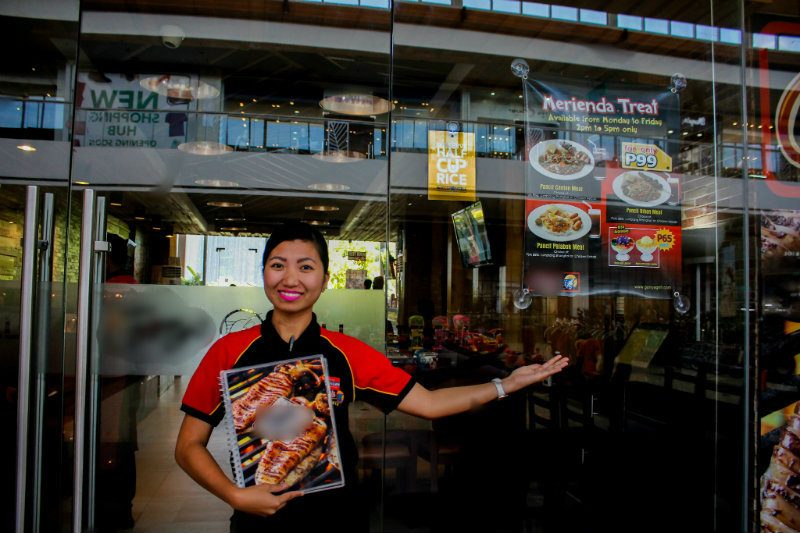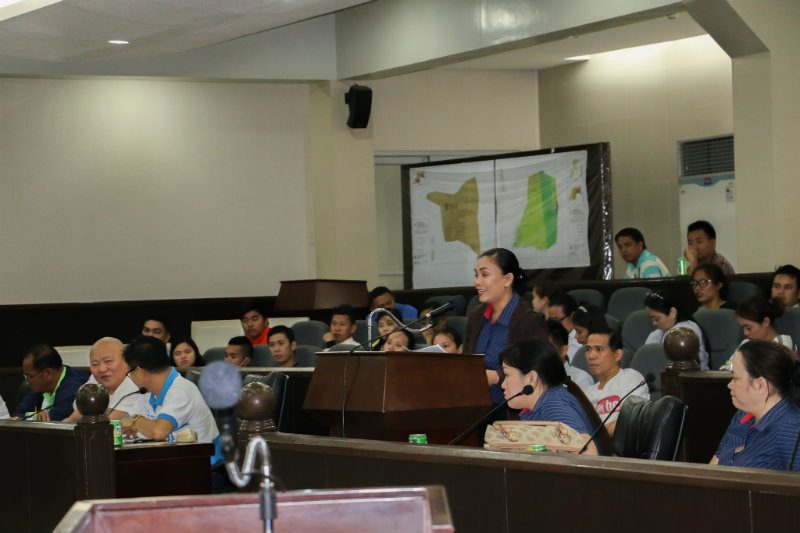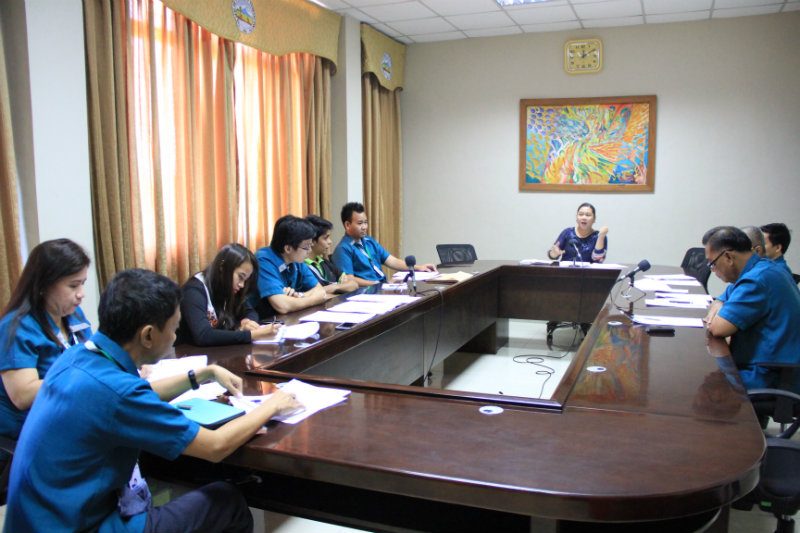SUMMARY
This is AI generated summarization, which may have errors. For context, always refer to the full article.

MANILA, Philippines– “Why should we offer half rice? We barely mind rice wastage. What matters more is we get more sales with full rice.” (READ: The problem with unlimited rice)
In a rice-loving country, these words are what some food establishments would argue why they refuse to offer half-cup of rice in their menus. But in General Santos, the local government is turning the tables to promote responsible rice consumption.
“If I haven’t attended the meeting, I wouldn’t have known the magnitude of rice wastage in the country,” said Aizabelle Iris Mangao, a manager of a restaurant franchise that offers grilled Filipino and Asian food.
In early 2015, Mangao attended a consultative meeting organized by the legislators of the city government of General Santos about the then proposed GSC Riceponsible Ordinance.
The policy took effect on December 2015 and mandated that the city “shall adopt measures, which shall ensure responsible rice consumption and rice conservation.” It also aims to educate consumers to not waste rice to help attain rice self-sufficiency in the country.

Over 80 representatives of small to large scale food stores learned that Filipinos waste about P23 million worth of rice a day, enough to feed nearly 2.6 million poor Filipinos. This reality awakened Mangao and her colleagues to make a conscious effort. They already started walking the talk long before the ordinance took effect. (READ: PH food wastage: Think twice before wasting your meal)
Immediately, Mangao informed her restaurant’s owner, who also owns at least 8 food franchises in the city about the ordinance. They then talked to the head office of the franchised restaurant that promptly approved its implementation. The half-cup of rice, roughly 80 grams, were incorporated at the point of sale (POS) which is also half the price of a full cup of rice (P30) as mandated by the ordinance.
“Before we started advocating for the half rice in our store, we started with ourselves. We asked our staff to responsibly consume rice,” Mangao said.
Downscaling the policy
The year 2013 was declared as the National Year of Rice (NYR) through Presidential Proclamation No. 494. The Department of Agriculture – Philippine Rice Research Institute (DA-PhilRice) enjoined rice producers, consumers, and policymakers to achieve rice self-sufficiency, specifically to promote less rice wastage.
Pursuant to the proclamation, the Department of the Interior and Local Government (DILG) encouraged cities and municipalities to pass ordinances that will require the food service industry “to make a half cup of rice available and visible in their menus.”
At the time of its celebration, then Senator Ferdinand Marcos Jr. authored the Anti-Rice Wastage Act of 2013. It seeks to penalize those in the food industry that refuse to serve half rice orders to the customers. At the House of Representatives, Congressman Agapito Guanlao filed a counterpart bill to address food security. He proposed the Food and Food Staples Consumption and Zero Food-Wastage Management Act of 2013.
Taking off from the NYR celebration and supporting the bills filed in the Senate and the House of Representatives, the Be Riceponsible Campaign was launched to continue advocating for responsible and healthier rice consumption.
In 2014, the campaign urged LGUs to support rice consumption responsibility. General Santos City vice mayor Shirlyn Nograles zealously responded to the call of the national government.
“With the issues on rice shortage, importation, and the health of the consumers, we felt that initiatives to address these issues were direly needed,” Nograles explained.
Nograles, together with councilor Brix Tan, chairperson of the Committee of Agriculture, co-authored an ordinance that instituted policies for responsible rice consumption in their city.
The legislators made sure that the ordinance was relevant. It compelled food stores to annually record their rice wastage for a week to continuously monitor the rice conservation status in the city.

Progress
According to the vice mayor, the food business sector responded positively. In fact, some food establishments, including that of Mangao’s, immediately posted promotional materials given by the LGU.
However, Mangao said that the ordinance has had little impact in their restaurant. Based on their data, only one out of 10 customers order half rice, in addition to their full cup of rice. (READ: How can government lower food prices in the Philippines?)
“Right now we’re taking baby steps [to make a] gradual impact. It’s an advocacy worth pushing. We believe this remains relevant and we need to think of its long-term benefits,” said vice mayor Nograles.
Nograles added that intensifying the campaign is their top priority. “The value of rice conservation should enter the consciousness of the consumers. Only then can we see changes in their eating lifestyles,” she said.
Local legislators are looking at tapping schools to raise awareness and involve students. One activity planned is a poster making contest.
“These posters may be used by the food establishments in their respective stores. We can also put other collaterals such as stickers so they can paste it on their menu boards,” said Ronan Villagonzalo, who works as a legislative assistant of councilor Tan.
The legislators also want to mandate the posting of information materials as a prerequisite for securing business permits and licenses in the local food service industry.

Creating synergy
Today, there are over 40 LGUs who have already passed ordinances mandating the offering of the half rice option.
The Be Riceponsible campaign is taking huge strides for healthier and food secure Filipino communities, including advocating for the consumption of healthier rice, specifically brown rice.
“We are now tapping major fast food chains to support our advocacies. In this way, downscaling a directive to their branches across the country can expedite its implementation,” said Hazel Antonio, campaign director.
Antonio added that they are partnering with other policymakers, meeting with hotel and restaurant owners, and promoting the campaign at various food festivals.
The elusive goal of achieving rice self-sufficiency is every Filipino’s riceponsibility. With strong political will, multi-stakeholder collaboration, and responsible rice production, consumption, and conservation, we’ll surely get far and reach the finish line. Only then can we achieve a rice secure Philippines. – Rappler.com
Sonny Pasiona, 24, is a development communicator at the Philippine Rice Research Institute – Central Experiment Station
Add a comment
How does this make you feel?










There are no comments yet. Add your comment to start the conversation.